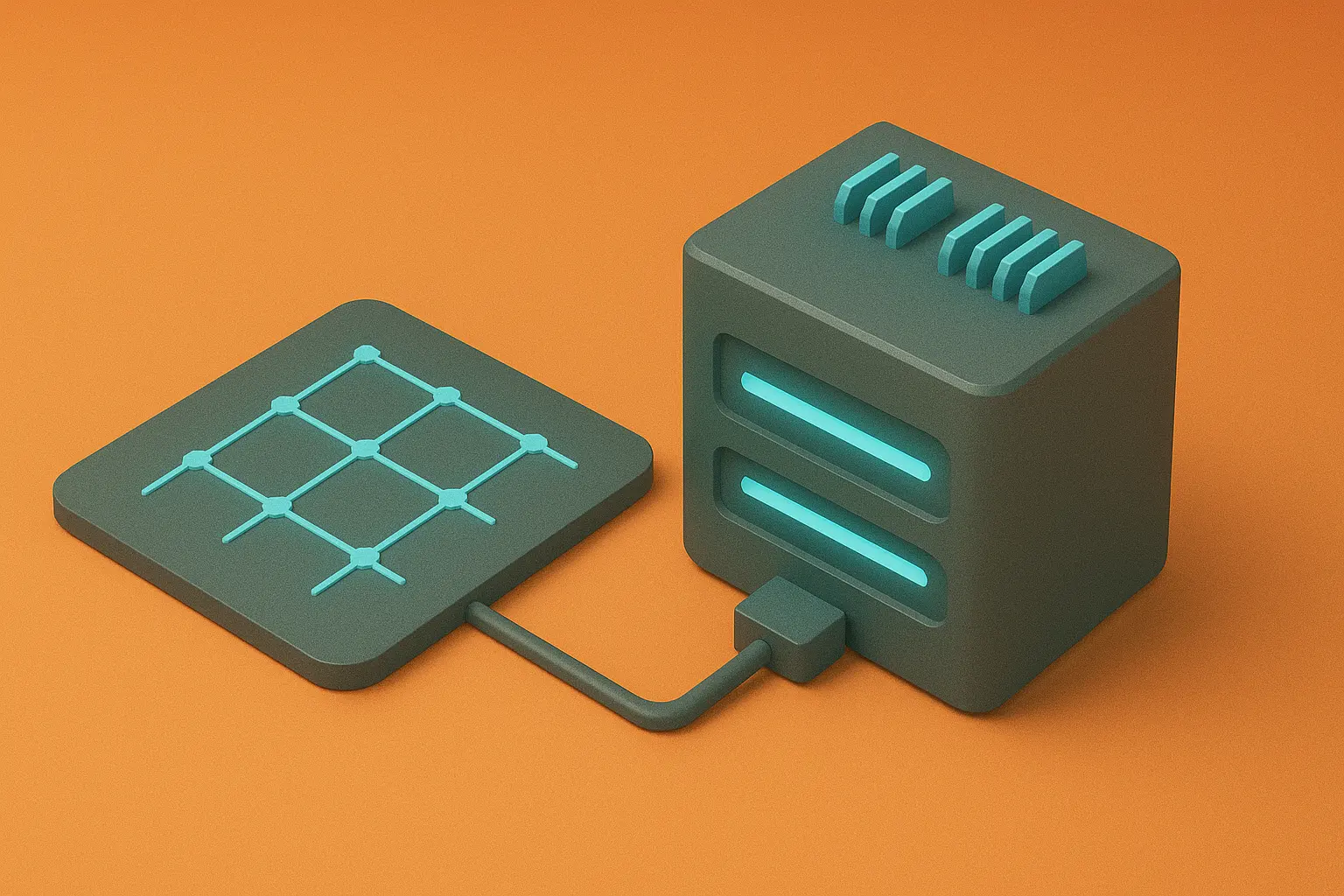
NVIDIA GRID is a groundbreaking GPU virtualization platform that enables multiple virtual machines to share powerful graphics processing units, delivering desktop-class graphics performance in virtualized environments. Introduced in 2008, NVIDIA GRID was specifically targeted towards GPU virtualization and cloud gaming. A server equipped with NVIDIA data center GPUs allows for sharing of GPU resources among multiple users. In this guide, you’ll learn what NVIDIA GRID technology is, how it transforms VDI deployments, and why it’s essential for modern enterprise computing.
Since its introduction in 2008, NVIDIA GRID has revolutionized how organizations deliver graphics-intensive applications to virtual workstations. NVIDIA vGPU technology allows firms to provide designers and engineers with secure access to high-end CAD and PLM applications from a central server. RTX Virtual Workstation (vWS) provides a workstation-class experience for high-end professional graphics applications like 3D modeling and CAD. NVIDIA's vGPU software is available in different editions tailored to specific virtualized use cases such as virtual applications, virtual PCs, RTX virtual workstations, and virtual compute servers. This comprehensive guide covers GRID architecture, licensing models, supported hypervisors, implementation strategies, and real-world applications that help IT administrators and system architects make informed decisions about GPU virtualization.
Whether you’re managing CAD workstations, supporting remote professionals, or evaluating cloud alternatives, understanding NVIDIA GRID’s capabilities and limitations is crucial for modern enterprise infrastructure planning. NVIDIA GRID technology enhances productivity and enables the benefits of virtualization while delivering exceptional user experiences. NVIDIA GRID enables organizations to extend the reach of VDI to all users cost-effectively.

Understanding NVIDIA GRID: Key Concepts and Architecture
Core GRID Technology Definitions
NVIDIA GRID Virtual GPU Manager serves as the foundation that enables multiple VMs to access shared GPU resources simultaneously. NVIDIA GRID vGPU enables multiple virtual machines to have simultaneous, direct access to a single physical GPU, using the same NVIDIA graphics drivers that are deployed on non-virtualized operating systems. The platform supports various vGPU types including K100, K140Q, K160Q, and K180Q profiles, each designed for specific performance requirements and user densities. The maximum number of vGPUs that can be created simultaneously on a physical GPU varies according to the vGPU type.
Virtual GPUs differ fundamentally from traditional GPU pass-through configurations. While pass-through dedicates an entire physical GPU to a single VM, vGPU technology allows multiple virtual machines to share GPU resources efficiently. This approach maximizes hardware utilization while maintaining performance isolation between users. NVIDIA GRID offers up to 250% improvement in end user latency for virtualized applications. NVIDIA GRID licensing is required for full vGPU features on Tesla M6, Tesla M10, and Tesla M60 GPUs.
The relationship between physical GPUs (Tesla M60, M10, M6) and virtual GPU instances creates a flexible resource allocation system. Each physical GPU can support multiple concurrent users running graphics-intensive applications across different operating systems including Microsoft Windows and Linux VMs. Centralized applications and data in a data center enhance security by protecting sensitive information from being stored on end-user devices. Organizations can remotely access applications with NVIDIA GRID without compromising security.
GRID Architecture and Component Relationships
NVIDIA virtual GPU architecture operates through a sophisticated layering system. The GRID Virtual GPU Manager runs on the hypervisor level, managing physical GPU resources and creating virtual GPU instances for guest VMs. This architecture supports major platforms including VMware vSphere, Citrix XenServer, and KVM. NVIDIA GRID supports an end-to-end virtual platform ecosystem with support for all major hypervisors. Microsoft began including NVIDIA GRID as part of its Azure Enterprise cloud platform in 2015.
The data flow begins when applications in guest VMs make graphics calls. These commands are processed by NVIDIA virtual GPU drivers, passed through the Virtual GPU Manager, and executed on physical GPU hardware. The rendered output is then compressed using onboard H.264 encoding and transmitted back to the client device. NVIDIA GRID delivers a user experience that's nearly indistinguishable from a native PC.
This architecture ensures that each VM receives dedicated GPU memory, processing power, and graphics capabilities while maintaining security isolation between different user sessions.
Why NVIDIA GRID is Critical for Modern VDI Deployments
Enterprise adoption of graphics-accelerated applications has increased dramatically, with 60% of enterprise users now accessing GPU-dependent software daily. Traditional CPU-only virtual workstations cannot deliver the performance required for professional applications like CAD, 3D modeling, and scientific visualization. Over half of enterprise users access at least one graphics accelerated app due to NVIDIA GRID technology. NVIDIA GRID Virtual PC provides excellent user experience for modern business applications like Microsoft Office and Adobe Photoshop.
NVIDIA GRID technology addresses this challenge by providing 250% improvement in end-user latency compared to software-based graphics rendering. Organizations report 30% increases in user density per server while maintaining application compatibility and performance standards. GRID-accelerated virtual desktops deliver GPU-accelerated experiences for office workers and traders for demanding tasks involving rich media, video conferencing, and complex data visualization. Virtual Applications (vApps) are ideal for delivering standard PC applications and multimedia to many concurrent users through NVIDIA vGPU software.
The business impact extends beyond technical metrics. Companies implementing GRID solutions achieve 100% application virtualization capability, allowing previously impossible remote access to graphics-intensive software. This capability became essential during remote work transitions, enabling professionals to access full desktop environments from any device.
Windows 10 graphics requirements represent a 50% increase compared to Windows 7, making GPU acceleration necessary rather than optional for modern desktop virtualization deployments.
NVIDIA GRID Hardware and vGPU Types Comparison
vGPU profiles determine framebuffer allocation, display outputs, and maximum resolution support. Higher-numbered profiles (like K180Q) provide more GPU resources per user, while lower profiles (K100) maximize user density with basic graphics acceleration.
Step-by-Step NVIDIA GRID Implementation Guide
Step 1: Hardware Prerequisites and Planning
Server hardware must support specific requirements including compatible motherboards, adequate power supplies, and proper cooling systems. NVIDIA GRID cards require PCIe 3.0 x16 slots and specific BIOS configurations to enable virtualization features.
Hypervisor compatibility verification is essential before installation. VMware vSphere 6.5+ provides full GRID support, while Citrix XenServer and RHEL KVM offer varying feature sets. Network infrastructure should support high-bandwidth connections to deliver compressed graphics streams effectively.
Storage considerations include adequate disk space for VM templates, user profiles, and application data. SSD storage improves VM boot times and application launch performance significantly.
Step 2: Installing GRID Virtual GPU Manager
Installation procedures vary by hypervisor platform. VMware ESXi requires VIB package installation through vSphere Update Manager or command-line tools. The installation process includes:
- Download appropriate GRID driver package for your hypervisor version
- Place the driver file in accessible location on management network
- Install VIB package using esxcli commands or vSphere interface
- Configure GPU mode switching for Tesla cards from compute to graphics mode
- Verify installation using nvidia-smi command validation
Citrix XenServer installations use RPM packages with similar procedures but different command syntax. Always verify driver version compatibility between Virtual GPU Manager and planned guest VM drivers before deployment.
Step 3: Configuring Virtual Machines with vGPUs
VM configuration requires specific settings for each hypervisor. VMware vSphere uses the vSphere Client to assign vGPU profiles to individual VMs through hardware configuration menus. Each VM can receive one vGPU assignment matching available physical GPU capacity.
Guest operating systems require NVIDIA virtual GPU drivers installation after VM deployment. Windows VMs use standard driver installation procedures, while Linux VMs may require additional configuration steps depending on distribution and kernel versions.
License validation occurs during driver installation, requiring proper NVIDIA GRID license server configuration and network access from guest VMs. A software license is required to use full vGPU features, allowing a VM to obtain a license from a configured license server when booted. If a vGPU is configured, the VM retains the license from the license server until it is shut down. A license server can be configured to provide licenses to vGPUs, ceasing warning messages when a license is obtained. Users may experience warnings in the absence of a license when trying to obtain a vGPU license on supported Tesla GPUs.
Common NVIDIA GRID Implementation Mistakes
Mistake 1: Mixing incompatible vGPU types on the same physical GPU Each physical GPU must run identical vGPU profiles across all assigned VMs. Mixing different profile types causes configuration conflicts and performance issues.
Mistake 2: Failing to disable ECC memory on Tesla M60/M6 cards Tesla cards ship with ECC memory enabled for compute workloads. GRID deployments require ECC disabled to maximize available framebuffer memory for graphics applications.
Mistake 3: Incorrect hypervisor graphics settings (vSGA vs vGPU configuration) Hypervisor graphics settings must match GRID requirements. Using legacy vSGA configurations instead of proper vGPU assignments prevents GRID functionality.
Pro Tip: Always verify driver version compatibility between Virtual GPU Manager and guest VM drivers. Mismatched versions cause stability issues and feature limitations that are difficult to troubleshoot.
Real-World NVIDIA GRID Deployment Case Study
Case Study: A Fortune 500 engineering company deployed GRID M60 cards across 500+ virtual workstations to replace traditional thick clients running CAD applications.
Starting situation: The organization struggled with high IT overhead managing individual workstations, inconsistent software versions, and limited remote access capabilities for engineering teams.
Implementation steps:
- Deployed VMware vSphere infrastructure with Tesla M60 cards across three data centers
- Created standardized Windows 10 VDI templates with pre-installed CAD applications
- Migrated users gradually while maintaining parallel thick client access
- Implemented centralized license management and application delivery
Results achieved:
- 40% reduction in hardware acquisition and maintenance costs
- 60% faster application deployment for new software versions
- 99.9% uptime compared to 94% with previous thick client infrastructure
- Complete remote access capability enabling distributed workforce
NVIDIA GRID Limitations and Big Tech Cloud Considerations
NVIDIA GRID technology faces several inherent limitations that organizations must consider. Hardware dependency requires specific Tesla or GRID cards for on-premises deployments, creating vendor lock-in and limiting hardware flexibility. Organizations cannot use existing GeForce cards or alternative GPU manufacturers with GRID software. NVIDIA GRID K1 and K2 GPUs do not require a license to run vGPU. NVIDIA GRID K1 and K2 GPUs have been integrated with Supermicro server clusters for use with 3D-intensive applications.
Licensing complexity presents ongoing challenges with per-user concurrent licensing models that differ significantly from traditional software licensing. Organizations must purchase GRID licenses separately from hardware, creating additional budget line items and compliance tracking requirements.
Big Tech cloud implementations introduce additional limitations beyond GRID’s inherent constraints. AWS, Azure, and Google Cloud Platform offer GRID-powered instances, but with significant restrictions:
- Limited GPU instance availability during peak demand periods
- Geographic restrictions for high-performance GPU instances
- Vendor lock-in to cloud provider management systems and pricing models
- Network latency affecting performance for geographically distributed users
- Data sovereignty concerns when sensitive workloads must remain on-premises
Cloud provider GRID implementations often involve resource oversubscription, where multiple customers compete for shared GPU resources. This creates performance variability that can impact mission-critical applications requiring consistent graphics performance.
Cost analysis reveals that Big Tech cloud GRID instances become expensive for sustained workloads. While attractive for burst computing scenarios, continuous usage often exceeds on-premises GRID deployment costs when including data transfer and management overhead.

NVIDIA GRID vs Compute with Hivenet: Alternative GPU Solutions
The emergence of distributed computing platforms like Compute with Hivenet presents compelling alternatives to traditional centralized GRID deployments. These platforms offer fundamentally different approaches to GPU resource delivery and management.
NVIDIA GRID’s Centralized Architecture Advantages:
- Mature enterprise integration with VMware vSphere, Citrix XenServer, and KVM platforms
- Comprehensive security and compliance frameworks suitable for regulated industries
- Predictable performance with guaranteed resource allocation per user
- Centralized management reducing administrative complexity
- Established vendor support and professional services ecosystem
Hivenet’s Distributed Approach Benefits:
- Decentralized architecture eliminates single points of failure inherent in centralized data centers
- Pay-per-use pricing models offer cost advantages for variable workloads
- Geographic distribution reduces latency for globally distributed teams
- Flexibility to leverage diverse GPU hardware without vendor restrictions
- Rapid scaling capabilities for burst computing requirements
Cost Analysis Comparison: GRID implementations require significant upfront hardware investment plus ongoing licensing fees. A typical 100-user GRID deployment might cost $200,000 in hardware plus $50,000 annually in licensing. Hivenet’s distributed model offers pay-per-use pricing that can reduce costs for organizations with variable GPU demands.
Performance and Scalability Differences: Centralized GRID deployments deliver consistent performance but scale in discrete increments requiring additional server hardware. Distributed platforms like Hivenet can scale more granularly but may experience performance variability based on available network nodes.
Use Case Scenarios: Choose NVIDIA GRID for enterprise VDI deployments requiring consistent performance, regulatory compliance, and centralized management. Consider Hivenet for burst computing, AI workloads, and scenarios requiring geographic distribution or variable resource demands.
Key NVIDIA GRID Takeaways
NVIDIA GRID technology has established itself as the enterprise standard for GPU virtualization, enabling organizations to deliver graphics-intensive applications through virtual workstations with 30% density improvements over traditional deployments. The platform’s mature integration with major hypervisors and comprehensive management tools make it suitable for mission-critical VDI deployments.
Success with GRID requires careful planning including proper hardware selection, licensing strategy, and hypervisor platform evaluation. Organizations must balance the benefits of centralized GPU resources against licensing costs and potential vendor lock-in considerations.
While Big Tech cloud implementations offer reduced infrastructure management, they introduce additional limitations including vendor lock-in, performance variability, and potentially higher long-term costs. Alternative solutions like Hivenet Compute provide compelling options for specific use cases requiring distributed architecture or variable resource demands.
Next steps for implementation:
- Evaluate current graphics workload requirements and user distribution
- Plan pilot deployment with representative user groups and applications
- Consider hybrid approaches combining on-premises GRID with cloud alternatives
- Assess total cost of ownership including hardware, licensing, and management overhead
The choice between NVIDIA GRID, Big Tech cloud implementations, and distributed alternatives depends on specific organizational requirements for performance, cost, compliance, and scalability. Understanding these trade-offs enables informed decisions that align GPU virtualization strategy with business objectives.
FAQs about NVIDIA GRID
Can NVIDIA GRID run on consumer GeForce cards?
No, GRID technology requires Tesla or certified GRID cards with proper licensing. GeForce cards lack the virtualization hardware and software support necessary for multi-user GPU sharing.
What’s the difference between vGPU and GPU pass-through?
vGPU technology shares one physical GPU among multiple VMs with resource isolation, while pass-through dedicates an entire GPU to a single VM. vGPU maximizes hardware utilization and user density.
Does GRID support CUDA applications in virtual machines?
Yes, GRID vGPU supports CUDA and OpenCL workloads in guest VMs. Applications can access GPU compute resources alongside graphics acceleration within the allocated vGPU profile limits.
Can I mix different vGPU types on the same server?
Yes, different physical GPUs in the same server can run different vGPU types. However, all vGPUs on the same physical GPU must use identical profiles to prevent configuration conflicts. This approach differs from distributed systems, where resources can be managed across multiple physical components with different configurations.
How does GRID licensing work for virtual workstations?
GRID uses concurrent user licensing where organizations purchase licenses based on maximum simultaneous users, often in cloud storage data centers. Each active vGPU session consumes one license regardless of the specific vGPU profile assigned.

